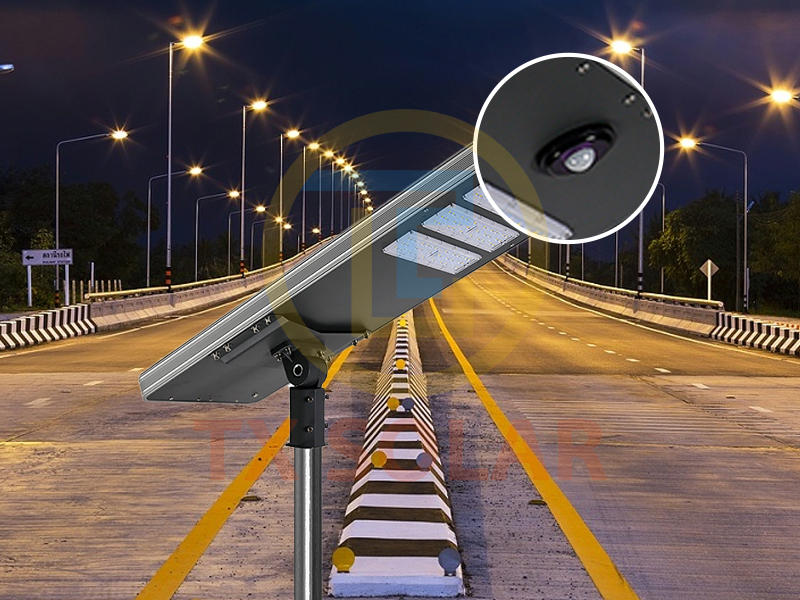Demand for sustainable and energy-efficient lighting solutions has surged in recent years, leading to the widespread adoption of solar street lights. Among these innovative lighting systems, solar street lights with motion sensors have received special attention for their ability to enhance safety, save energy, and reduce operating costs. This article takes an in-depth look at how solar street lights with motion sensors work, their advantages, and their applications in modern urban environments.
How motion sensors enhance solar street lights
A motion sensor is a device that detects motion within a specific range. In the context of solar street lights, these sensors play a vital role in optimizing energy usage and enhancing safety. Here’s how they work:
1. Detection mechanism
Motion sensors typically use one of two technologies: passive infrared (PIR) or microwave detection.
Passive Infrared (PIR): This technology detects changes in infrared radiation emitted by warm objects such as humans or animals. When someone approaches the light, the PIR sensor detects a heat signature and triggers the light to turn on.
Microwave Sensors: These sensors emit microwave signals and measure the reflection of these signals. When a moving object enters the detection area, the sensor picks up changes in the reflected signal, activating the light.
2. Energy efficiency
One of the main advantages of integrating motion sensors into solar street lights is energy efficiency. Traditional street lights are left on all night, even when no one is around, consuming energy. In contrast, solar street lights with motion sensors remain dimmed or turned off until motion is detected. This feature significantly reduces energy consumption, allowing the system to run longer on stored solar energy.
3. Lighting control
When motion is detected, the light intensity can be adjusted based on the activity level. For example, the lights can switch from dim mode to full-bright mode when someone approaches, providing adequate security lighting without wasting energy. After a predetermined period of inactivity, the light can revert to dim mode, conserving energy until the next movement is detected.
4. Autonomous operation
Solar street lights with motion sensors operate independently of the grid, making them ideal for remote or off-grid locations. The combination of solar panels and motion sensors allows these lights to operate autonomously, providing reliable lighting without requiring extensive wiring or infrastructure.
Advantages of Solar Street Lights with Motion Sensors
Integrating motion sensors into solar street lights has many benefits:
1. Enhance security
By emitting light only when needed, these lights can deter potential criminal activity and enhance safety for pedestrians and cyclists. A sudden burst of brightness when motion is detected may scare intruders and alert nearby residents.
2. Cost effectiveness
Solar street lights with motion sensors reduce energy costs and maintenance expenses. Municipalities can save money on electricity bills by not relying on the grid, and the long lifespan of LED lights minimizes replacement costs.
3. Environmental impact
Harnessing solar energy significantly reduces your carbon footprint. By harnessing renewable energy, solar street lights help create a cleaner environment and promote sustainable development.
4. Easy to install and maintain
These lights are relatively easy to install and require little infrastructure. Additionally, they provide a worry-free lighting solution since there are fewer components that require regular maintenance.
Application of solar street lights with motion sensors
Solar street lights with motion sensors are versatile and can be used in a variety of environments, including:
Parks and Recreation Areas: Enhanced safety for nighttime visitors.
Residential Streets: Provide lighting to the community while saving energy.
Parking: Improved safety for vehicles and pedestrians.
Rural Areas: Provides reliable lighting in areas without access to the grid.
In conclusion
Solar street lights with motion sensors represent a major advancement in outdoor lighting technology. By combining solar energy with smart motion detection, these systems provide sustainable, cost-effective and efficient solutions for urban and rural environments. As cities continue to prioritize sustainability and energy efficiency, adoption of solar streetlights with motion sensors is likely to increase, paving the way for safer, greener communities.
Post time: Nov-07-2024

